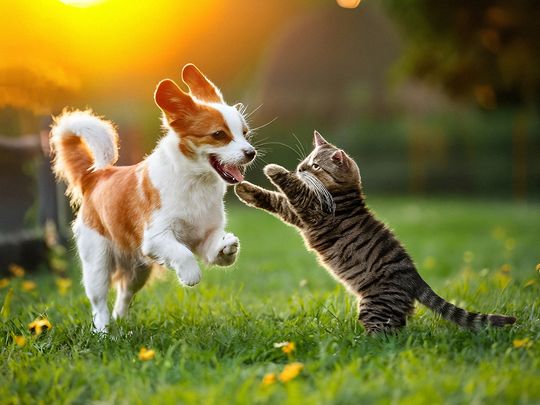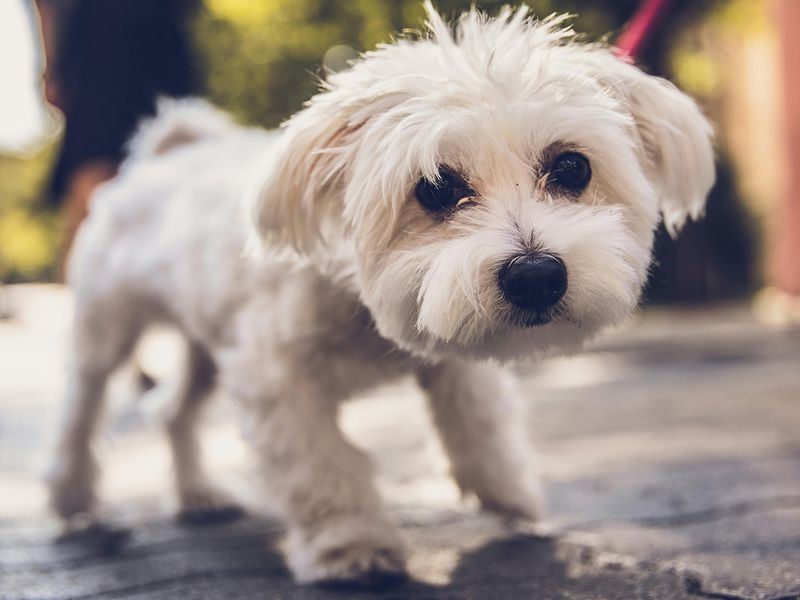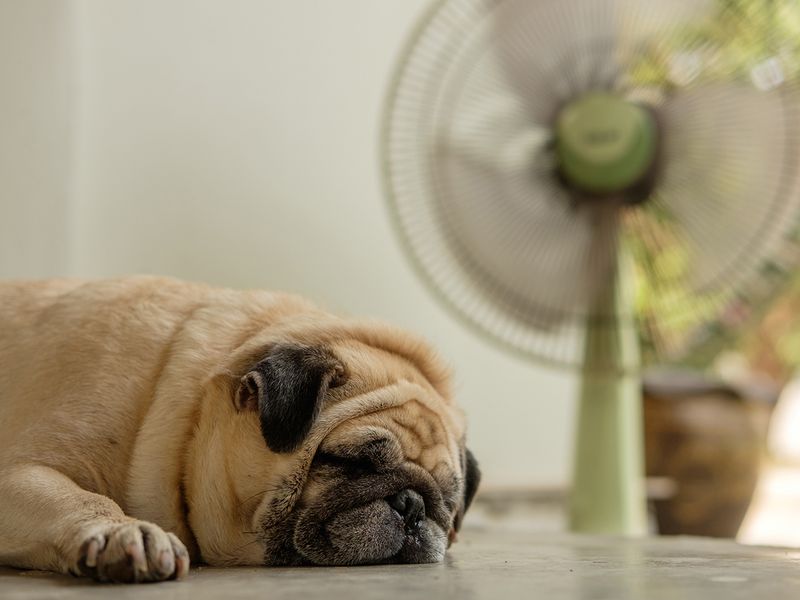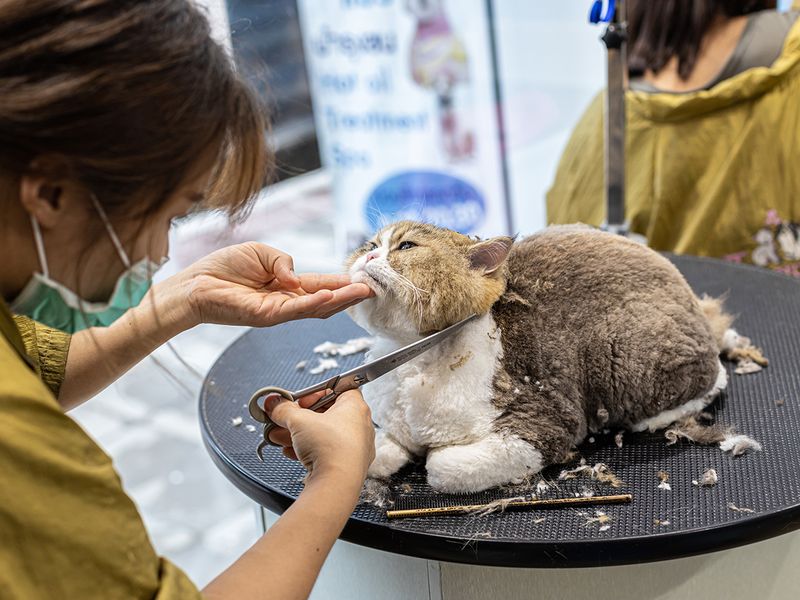
Dubai: As the UAE braces for even higher temperatures in the coming months, pet owners should be mindful of the impact this heat can have on their furry companions. Just like humans, pets are susceptible to heatstroke and exhaustion. Fortunately, by taking proactive measures, you can ensure your pet stays cool and comfortable throughout the summer.
Gulf News spoke to UAE-based veterinarians for expert advice on keeping your pet safe during the hot summer months.
Cooling pads, splash pools and shade
Dr Rami Mdawar, veterinarian and medical manager at Modern Veterinary Clinic, explained to Gulf News, that once summer rolls in, pet owners need to make sure their pets stay indoors as much as possible, avoiding being outside during the peak hours of the day and always have clean fresh water.
“For dogs, ensure they have access to plenty of fresh water and shade and avoid taking them for walks during the hottest parts of the day. Also consider using cooling mats or providing a shallow pool for them to splash in,” he said.
Similarly, for cats make sure they have cool and shaded areas, and cooling pads.
“Keep them indoors during peak heat hours. Provide cool, shaded areas and ensure they have access to fresh water. You can also use cooling pads or frozen water bottles wrapped in towels for them to lie next to,” Dr Mdawar said.

For dogs, ensure they have access to plenty of fresh water and shade and avoid taking them for walks during the hottest parts of the day. Also consider using cooling mats or providing a shallow pool for them to splash in.
Keep the air condition (AC) on
Taking into consideration the high temperatures during the summer months, using fans and cooling beds as the only source for your pets to cool down, is not the best practice according to Dr Mdawar.
“While fans and cooling beds can help, they are not as effective as air conditioning in maintaining a consistently cool environment. I recommend keeping the air conditioning on, especially during the hottest parts of the day, to ensure your pets remain comfortable and safe,” he said.
He also highlighted that if you have small pets like rabbits or birds, ensure their cages are not in direct sunlight and provide plenty of ventilation. For reptiles, maintain the appropriate temperature gradients, and ensure they have access to cooler areas within their enclosures.
While fans and cooling beds can help, they are not as effective as air conditioning in maintaining a consistently cool environment. I recommend keeping the air conditioning on, especially during the hottest parts of the day, to ensure your pets remain comfortable and safe.
Four tips to keep in mind while walking your dog in the summer
Hot sidewalks and pavements can burn your dog’s paws if you walk them during the day, that’s why Dr Mdawar advised pet owners to time their walks when temperatures are slightly cooler. Here are a few of his tips for dog walking in the summer:
1. Walk your dog early in the morning or late in the evening when temperatures are cooler.
2. Always carry water for your dog and take regular breaks in the shade. Consider carrying a portable water bowl during walks.
3. Avoid hot pavements, as they can burn your dog's paws. Test the ground with your hand – if it's too hot for you, it's too hot for your dog!
4. Consider using protective booties for their paws.

Six warning signs for heat exhaustion in pets
For pet owners, it is important to know the signs of overheating or heat exhaustion in pets. According to Dr Mdawar, here are some of the signs to watch out for in dogs and cats:
1. Excessive panting and drooling
2. Lethargy or weakness
3. Vomiting or diarrhoea
4. Rapid heart rate
5. Bright red or pale gums
6. In severe cases, collapse or seizures
Certain dog and cat breeds are at high-risk for overheating
Dr Soheyl Simaei, veterinary surgeon at Noble Veterinary Clinic, highlighted that certain dog breeds are more susceptible to overheating than others, due to their physical characteristics and coat types.
“Breeds with short noses (brachycephalic breeds) like bulldogs, pugs, and boxers have a harder time cooling down because they cannot pant as efficiently. Additionally, breeds with thick, double coats, such as Siberian Huskies, Alaskan Malamutes, and Saint Bernards, are more prone to overheating. These breeds have coats designed to keep them warm in cold climates, making it difficult for them to regulate their body temperature in hot weather,” he said.
According to Dr Simaei, cats, too, can be affected by heat, though they generally handle it better than dogs.

Breeds with short noses (brachycephalic breeds) like bulldogs, pugs, and boxers have a harder time cooling down because they cannot pant as efficiently. Additionally, breeds with thick, double coats, such as Siberian Huskies, Alaskan Malamutes, and Saint Bernards, are more prone to overheating.

Try to change your pet’s diet in the summer
Dr Simaei, recommended adjusting a pet’s diet during the summer months to help them cope with the heat, but it’s essential to consult with a veterinarian first.
“Ensure they have access to plenty of fresh, cool water at all times to stay hydrated. Some pet owners switch to lighter meals or foods with higher moisture content, such as wet food, to increase water intake. You can also offer pets cool treats, like frozen dog-safe fruits or specially formulated pet ice creams,” he said.
Trim the fur, don’t shave it in the summer
“Shaving a pet’s fur during the summer is generally not recommended unless advised by a veterinarian. A pet's coat serves multiple purposes, including protecting their skin from the sun and helping regulate body temperature,” Dr Simaei explained.
He added that shaving can expose them to sunburn and reduce their natural ability to cool down.
“For dogs and cats with long or thick fur, regular grooming to remove loose hair and prevent matting is beneficial. Trimming the fur (not shaving) can also help keep them cooler and more comfortable. Always seek advice from a professional groomer or veterinarian before deciding to shave your pet,” he advised.
Shaving a pet’s fur during the summer is generally not recommended unless advised by a veterinarian. A pet's coat serves multiple purposes, including protecting their skin from the sun and helping regulate body temperature. Shaving can expose them to sunburn and reduce their natural ability to cool down.

Watch out for ticks and mosquitoes in the summer
Ticks and mosquitoes are more prevalent in the summer, and here are some helpful tips from Dr Simaei to protect your pets:
• Regular check-ups: Regularly check your pets for ticks, especially after they have been outside. Pay close attention to areas like the ears, neck, and between toes.
• Preventative treatments: Use veterinarian-recommended flea and tick preventatives. There are topical treatments, oral medications, and collars available that can help keep pests at bay.
• Maintain cleanliness: Keep your pet’s bedding and living areas clean. Wash their bedding regularly in hot water and vacuum frequently to remove any ticks or fleas.
• Avoid high-risk areas: Try to avoid walking your pet in areas known for high tick populations, such as tall grasses and wooded areas.
• Mosquito protection: Use pet-safe mosquito repellents, especially if your pet spends a lot of time outdoors. Ensure your home has screens on windows and doors to keep mosquitoes out.
• Regular grooming: Regular grooming helps in early detection of ticks and maintaining the overall hygiene of your pet.










